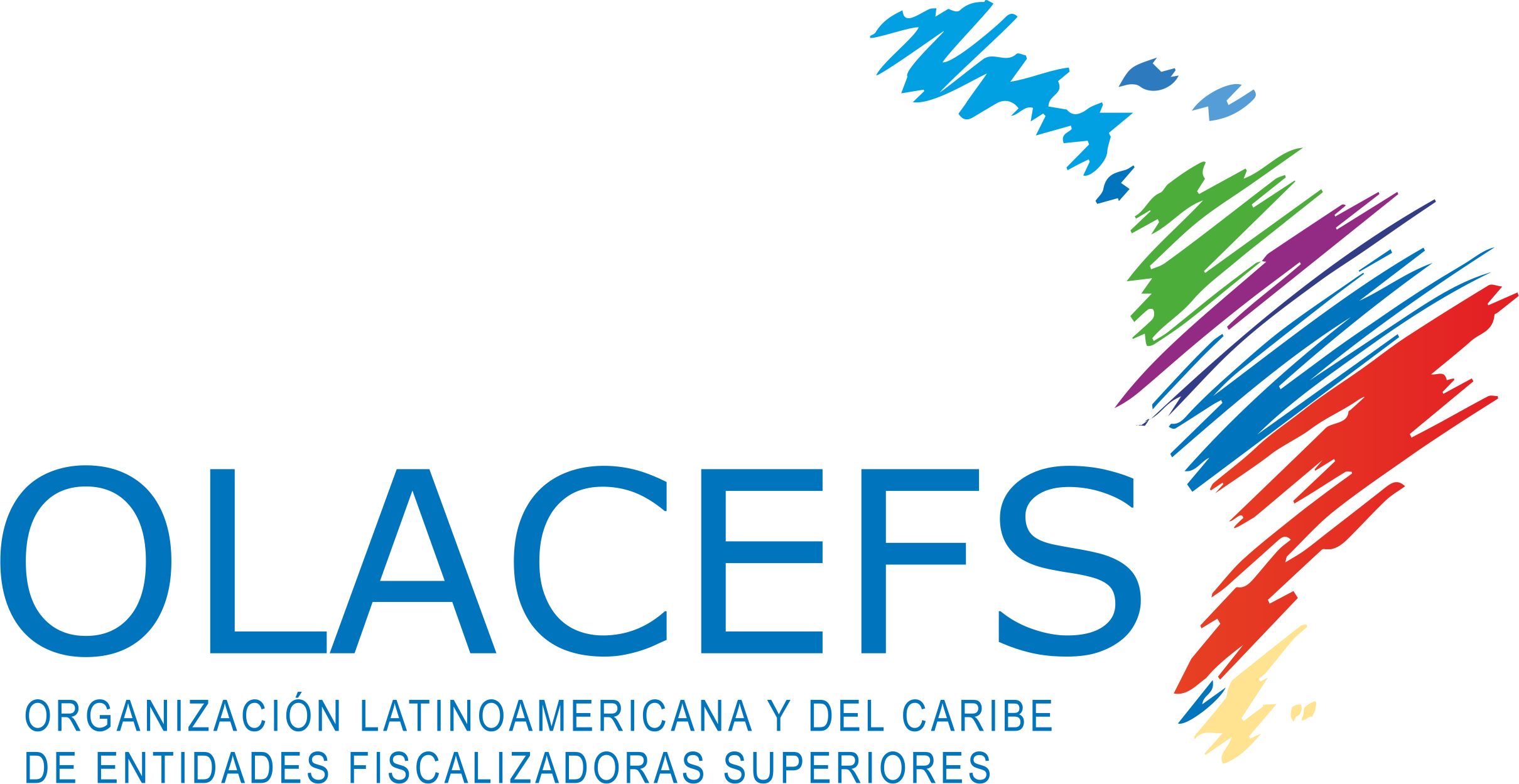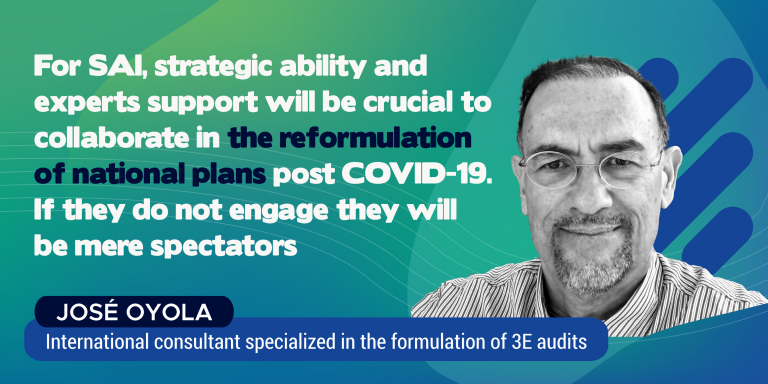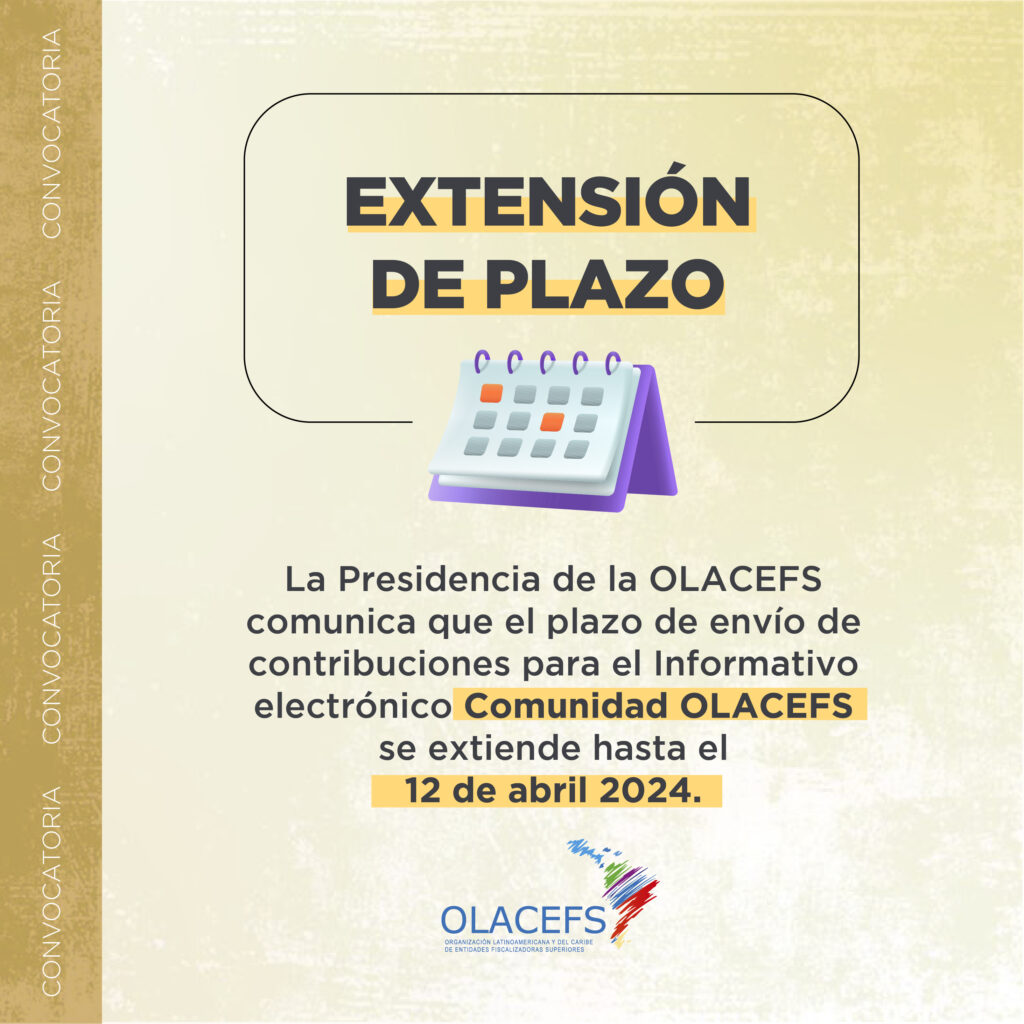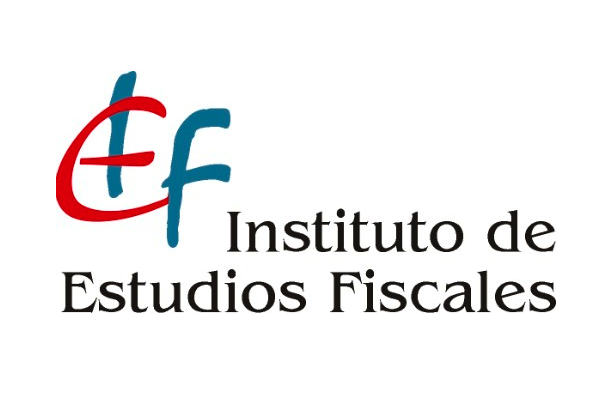JOSÉ OYOLA
International consultant specialized in the formulation of 3E audits
The crisis caused by the pandemic has allowed Supreme Audit Institutions (SAIs) to test their ability to promote good governance in conditions of high health risks and fiscal controls weakened by declarations of health emergencies.
Many SAIs have responded successfully to the pandemic, quickly identifying gaps in the healthcare supply chain. SAIs have also detected fraud in subsidy programs caused by weaknesses in their internal control system, and have promoted trust in public institutions, objectively evaluating the quality of official figures on infections and deaths from COVID-19.
Having fulfilled their functions of auditing and reporting on the pandemic, SAIs are now faced with the challenge of identifying future risks. Some SAIs have already recognized that COVID-19 is here to stay. The ability of the virus to continuously mutate will render future vaccinations in the experimental stage ineffective. As with the influenza vaccine, governments will have to increase resources to carry out regular vaccinations to a large part of the population.
Some SAIs maintain a vibrant institutional memory, allowing them to quickly identify lessons from past pandemics. These SAIs have easy access to their past audit reports, helping them identify effective responses to past pandemics. These SAIs will be able to help health authorities in assessing the permanence and severity of COVID-19, as is already the case with the AIDS virus and Influenza. These SAIs will be better positioned to collaborate in the formulation of new health and educational programs that are effective and efficient.
To meet the Sustainable Development Goal of “Leave No One Behind,” it is necessary to rethink what the priority investments are in the country. In the “new normal,” the national internet communications network will be as vital as the land and railroad infrastructure. Governments will have to financially support private sector technology companies to include all the poor and isolated communities of the country in the national internet network.
It is quite possible that national infrastructure plans will undergo significant adjustments that have not yet been clearly identified. In this debate, SAIs will be able to be effective interlocutors of the “Leave No One Behind” policy, to the extent that they are recognized as competent, objective and impeccable institutions. There will be necessary adjustments in the strategic plans and annual budgets that may be controversial because they will no longer be based on the assumptions of the past, before the arrival of COVID-19.
In the coming post-pandemic debate, SAIs will be able to succeed that have the capacity to communicate a coherent plan for building a resilient country that is capable of overcoming the risks of COVID-19 on an ongoing basis, ensuring its economic and social development, and achieving the SDGs.
About the Author
From 1990 to 2010, José Oyola served as Assistant Director in the Strategic Planning Division of the Government Accountability Office (GAO). He collaborated in multiple evaluations of the effectiveness, efficiency and economy (3E) of the United States public debt management, the international programs of the IRS, and the monitoring of budget cycles in the United States Government.
From 2011 to the present, he has been an international consultant specialized in the formulation and execution of 3E Audits and the adoption of good practices of Internal Control in government entities.
He has collaborated in bilateral projects to strengthen the capacity of the Supreme Audit Institutions (SAIs) of Colombia, Chile, Mexico, Puerto Rico and Vietnam.
He has participated in multilateral reviews of the institutional capacity of SAIs, conducting evaluations of the value and benefit of SAIs for the World Bank, the Inter-American Development Bank and the Organization for Economic Cooperation and Development (OECD).





